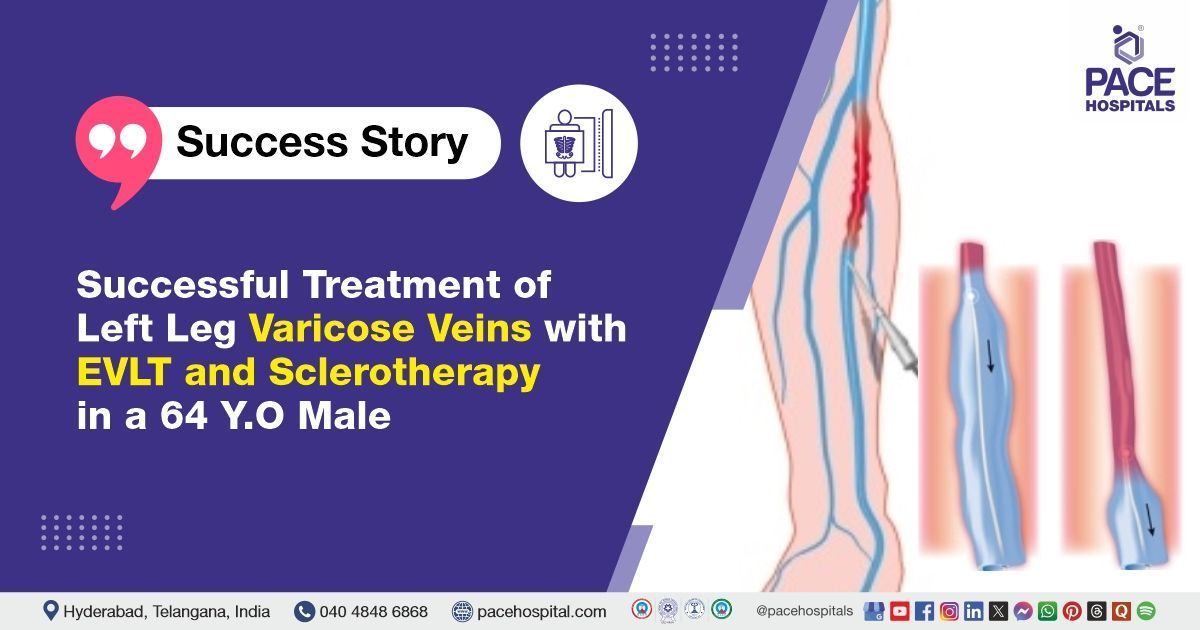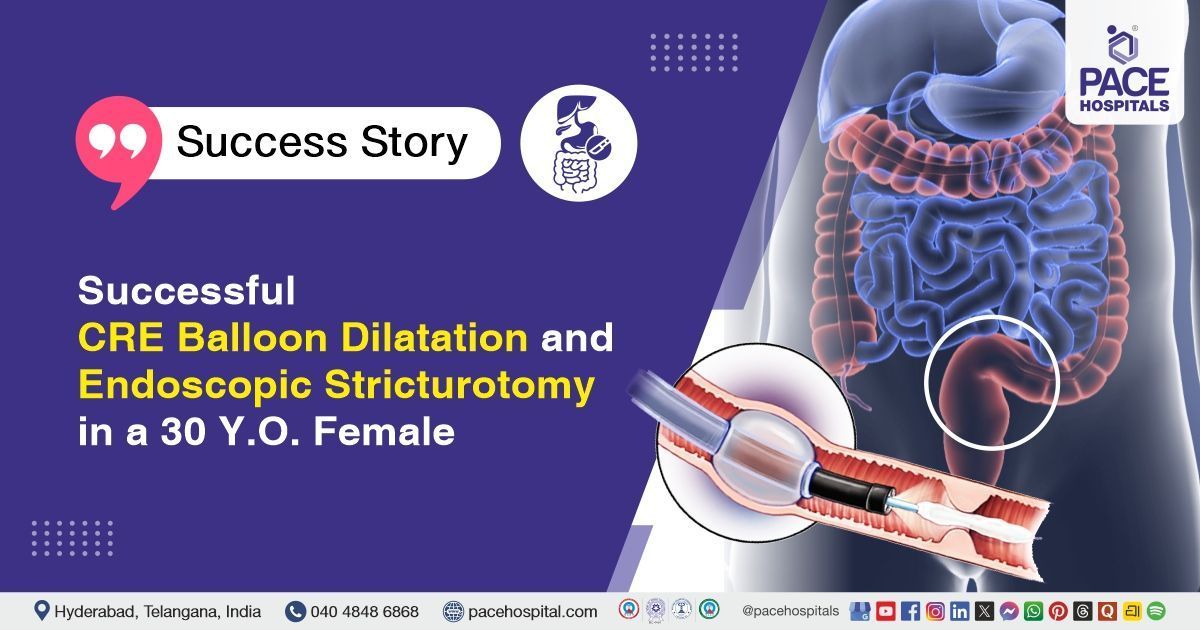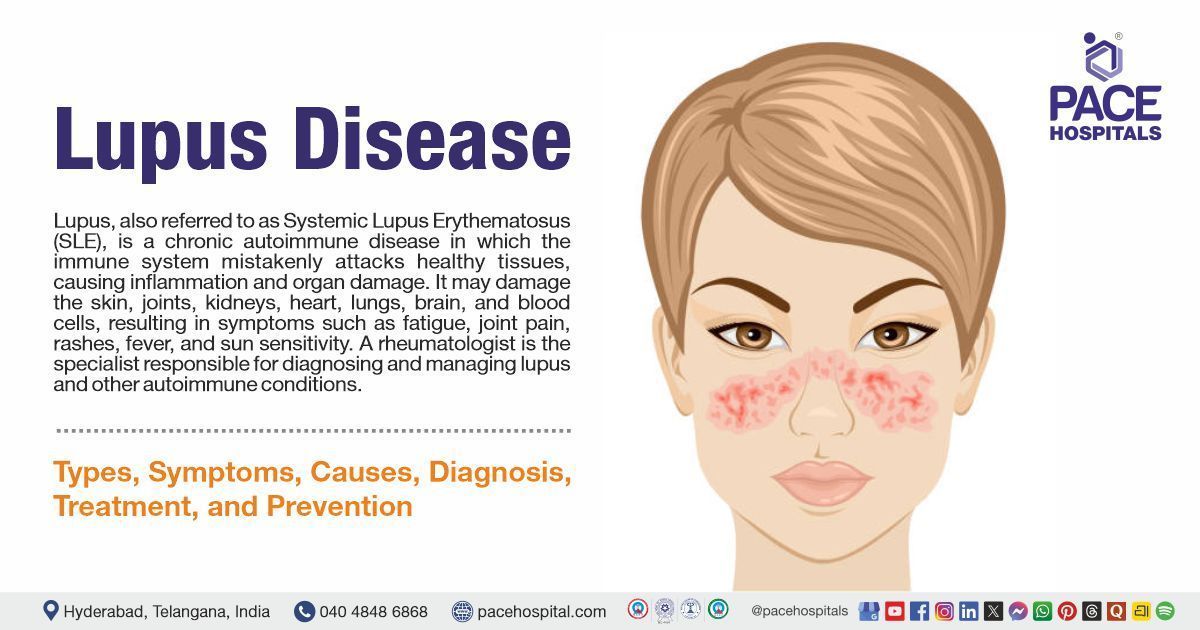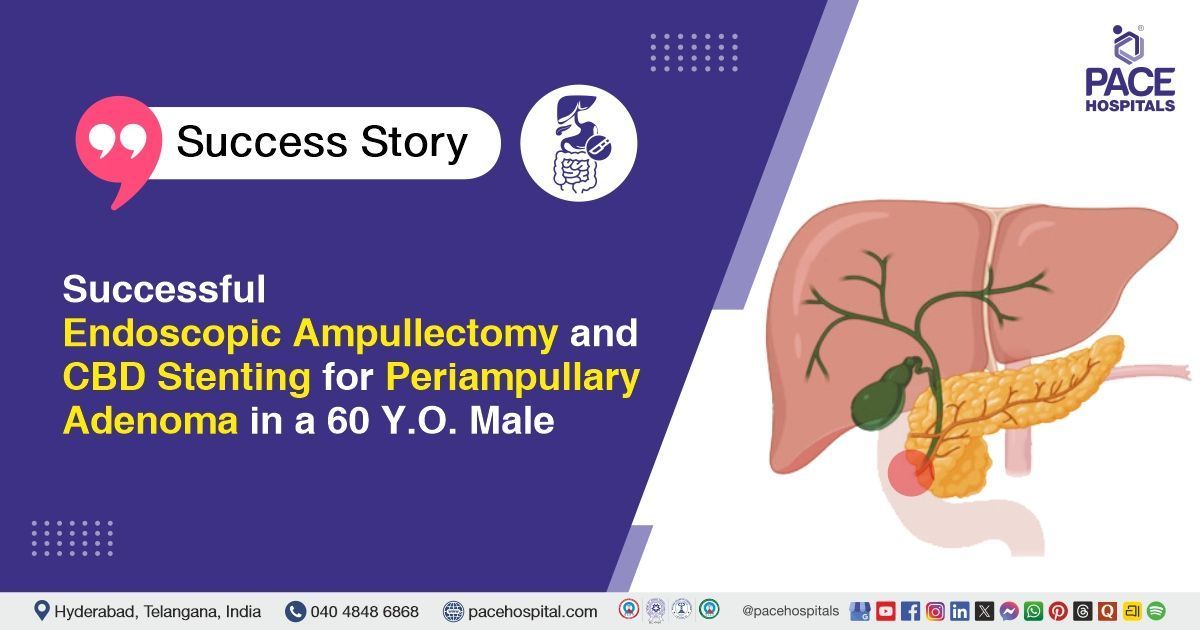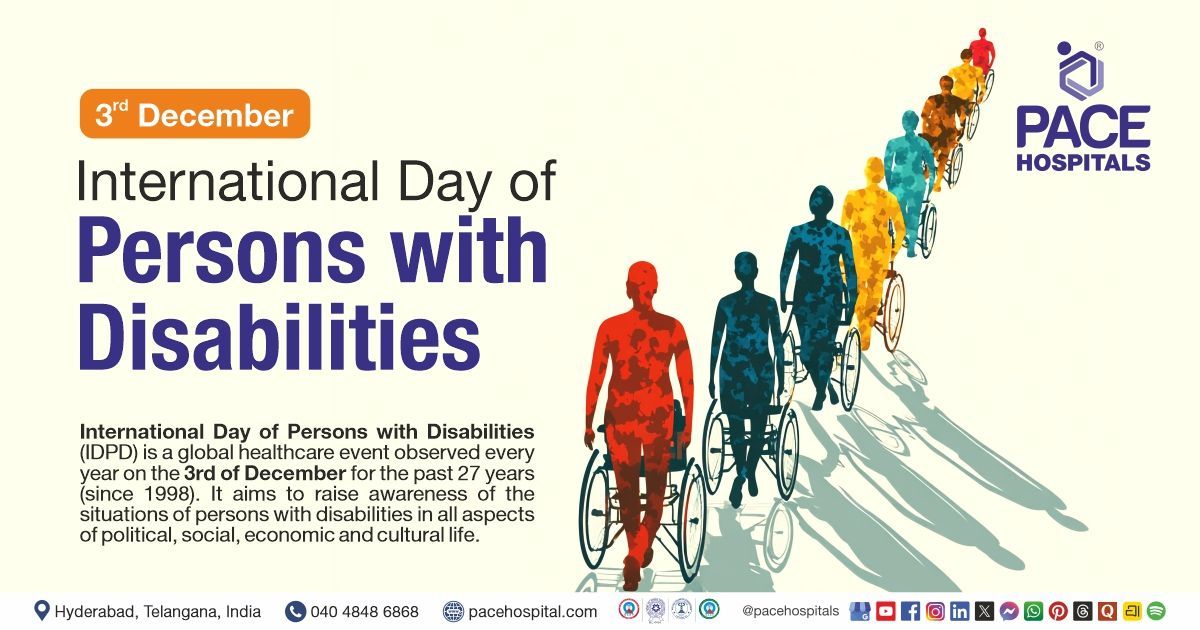Successful Treatment of Left Leg Varicose Veins with EVLT and Sclerotherapy in a 64 Y.O. Male
PACE Hospitals
PACE Hospitals Expert Interventional Radiology Team successfully performed Endovenous Laser Therapy (EVLT) and Sclerotherapy for Varicose Veins
in the left lower limb of a 64-year-old male patient who presented with dilated veins, pain, and swelling in the left leg. The procedure was performed to relieve symptoms such as pain, and swelling, associated with varicose veins to prevent further complications and enhance the patient's mobility and quality of life.
Chief Complaints
A 64-year-old male patient with a
Body Mass Index (BMI) of 23.1 presented to the Interventional Radiology Department at
PACE Hospitals, Hitech City, Hyderabad, with complaints of dilated veins, pain, and swelling in his left leg. He had been experiencing progressive discomfort, swelling, and pain in the affected limb, which had begun to interfere with his daily activities and mobility.
Past Medical History
The patient had previously undergone Endovenous laser ablation for right leg varicose veins and he is a known case of
chronic obstructive pulmonary disease (COPD) and has been on regular medication. His COPD was well-controlled with the consistent use of prescribed therapy; these prior interventions were considered during the preoperative evaluation and planning to ensure optimal surgical outcomes and minimize procedural risks.
On Examination
Upon admission to PACE Hospitals, the patient was hemodynamically stable. Cardiovascular and respiratory examinations were unremarkable, with normal heart sounds (S1, S2) and adequate bilateral air entry. Abdominal examination was normal, with a soft and non-tender abdomen. On examining the left lower leg, enlarged veins near the surface resembling varicose veins were noted, along with mild swelling.
Diagnosis
Following the clinical examination, the interventional radiology team conducted a comprehensive assessment, which included a detailed review of the patient's medical history and a focused clinical assessment. A color Doppler study revealed the presence of varicosities in the patient's left lower limb. It had also identified incompetent perforator veins, indicating poor venous valve function. These findings explained the patient's symptoms of leg pain, swelling, and visible vein enlargement.
Based on the actual diagnosis, the patient was advised to undergo Varicose Veins Treatment in Hyderabad, India, under the care of the Interventional Radiology Department, to ensure comprehensive management of his condition.
Medical Decision Making
After a thorough evaluation by Dr. Lakshmi Kumar CH, Interventional Radiologist, a comprehensive assessment of the patient's clinical condition and colour Doppler was performed. Considering the patient's symptoms, functional limitations in daily activities, and the confirmed diagnosis of Varicose veins in the left lower limbs (left leg), surgical intervention (Varicose vein surgery, or phlebectomy) was deemed necessary.
The patient and his family were thoroughly counselled about the nature of the condition, the planned surgical procedure, potential risks, and the necessity for surgery.
Surgical Procedure
Following the decision, the patient was scheduled to undergo Endovenous laser therapy (EVLT) and sclerotherapy surgery in Hyderabad at PACE Hospitals under the supervision of the expert Interventional Radiology Department. The following steps were carried out during the procedure:
- Anesthesia Administration: Spinal anaesthesia was administered to provide regional pain relief, followed by the infiltration of tumescent anaesthesia along the targeted veins to minimize discomfort and reduce the risk of thermal injury to surrounding tissues.
- Endovenous Laser Ablation:
- The left great saphenous vein (GSV), extending from just above the ankle to approximately 6 cm proximal to the saphenofemoral junction (SFJ), was accessed and ablated using a radial laser fibre.
- The left anterior accessory saphenous vein (AASV) in the upper thigh was also identified and ablated using the same technique.
- Additionally, the left small saphenous vein (SSV), extending from the apex of the calf to about 4 cm proximal to the popliteal fossa, was treated using the radial laser fibre.
- Foam Sclerotherapy: Selected varicosities in the left leg were treated with foam sclerotherapy anionic surfactant, effectively targeting the residual superficial varicosities.
- Haemostasis and Dressing: Hemostasis (the process of stopping bleeding) was meticulously secured. A compression dressing was then applied using crepe bandages to support the treated veins and minimize post-procedure complications such as bruising or swelling. The surgery was completed successfully without intraoperative complications.
Postoperative Care
The postoperative period was uneventful, and the patient had been closely monitored in the intensive care unit (ICU) to ensure a stable recovery. Intravenous antibiotics, analgesics, anticoagulants, nebulization, and other supportive treatments were given. The patient demonstrated symptomatic improvement, remained hemodynamically stable, and showed no signs of complications. He had been subsequently prepared for discharge with comprehensive post-discharge care instructions and follow-up recommendations.
Discharge Medications
Upon discharge, the patient was prescribed a course of oral medications, including antibiotics to prevent infection, analgesics for pain relief, antipyretics to manage any potential fever, and anticoagulants to reduce the risk of thromboembolic events. Additional supportive treatments were also advised as part of the post-discharge care plan.
Advice on Discharge
The patient was provided with specific post-procedure instructions. He was advised to avoid crossing his legs, standing or sitting for prolonged periods exceeding 30 minutes, and lifting objects weighing more than 5 kilograms for a duration of one week. Additionally, he was instructed to wear above-knee Class II compression stockings during daytime hours for two months to support venous return and facilitate recovery and to continue other medications as advised by other physicians to control his comorbid conditions.
Emergency Care
The patient was informed to contact the Emergency ward at PACE Hospitals in case of any emergency or the development of symptoms like fever, leg swelling, severe leg pain, chest pain, or breathlessness.
Review and Follow-Up
The patient was advised to return for a follow-up visit with the Interventional Radiologist in Hyderabad at PACE Hospitals, after 14 days. During this visit, his recovery would be assessed to evaluate the treatment outcome and determine if any further management was necessary.
Conclusion
This case highlights the successful use of Endovenous laser therapy (EVLT), also known as Endovenous laser ablation and sclerotherapy, in treating varicose veins in the left lower limb (leg).
Significance of Endovenous Laser Alation in the management of Varicose Veins
Endovenous Laser Ablation (EVLA) has developed as a minimally invasive and highly operative technique for the treatment of varicose veins, particularly those caused by saphenous vein reflux. By delivering targeted laser energy to the affected vein, EVLA induces thermal damage, leading to vein closure and eventual resorption. Compared to traditional surgical methods, such as vein stripping, Endovenous Laser Ablation (EVLA) is associated with less postoperative pain, the fastest recovery, minimal scarring, and a significantly lower recurrence rate. Its outpatient nature and high success rates make it a preferred choice for the interventional radiologist /interventional radiology doctor in varicose vein management, especially in patients seeking a quicker return to daily activities with reduced complication risks.
Share on
Request an appointment
Fill in the appointment form or call us instantly to book a confirmed appointment with our super specialist at 04048486868

